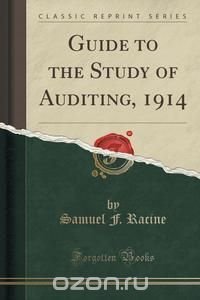Excerpt from Guide to the Study of Auditing, 1914
Purpose of This Book.
1. What constitutes a scientific system of accounts?
2. Into what branches may accountancy be divided?
3. Outline the salient features of the report on the financial condition of "A" and "B" Co.
5. Outline the working of the subsidiary plant ledger mentioned. In what way is it like the general books? What is the usual tendency of insolvent concerns in regard to the valuation of assets? Why is it desirable to show the provision for depreciation separate from the machinery account? How is conservatism in valuations supposed to affect the borrowing power of a concern?
Purposes and Advantages of an Audit.
8. How do you account for the failure of so many persons to employ auditors?
9. What are the purposes of an audit?
11. What is the responsibility of an auditor in connection with the detection of fraud? What are the principal avenues of fraud? How may fraud be practiced by the mis-appropriation of cash or goods?
About the Publisher
Forgotten Books publishes hundreds of thousands of rare and classic books. Find more at www.forgottenbooks.com
This book is a reproduction of an important historical work. Forgotten Books uses state-of-the-art technology to digitally reconstruct the work, preserving the original format whilst repairing imperfections present in the aged copy. In rare cases, an imperfection in the original, such as a blemish or missing page, may be replicated in our edition. We do, however, repair the vast majority of imperfections successfully; any imperfections that remain are intentionally left to preserve the state of such historical works. Это и многое другое вы найдете в книге Guide to the Study of Auditing, 1914 (Classic Reprint) (Samuel F. Racine)
